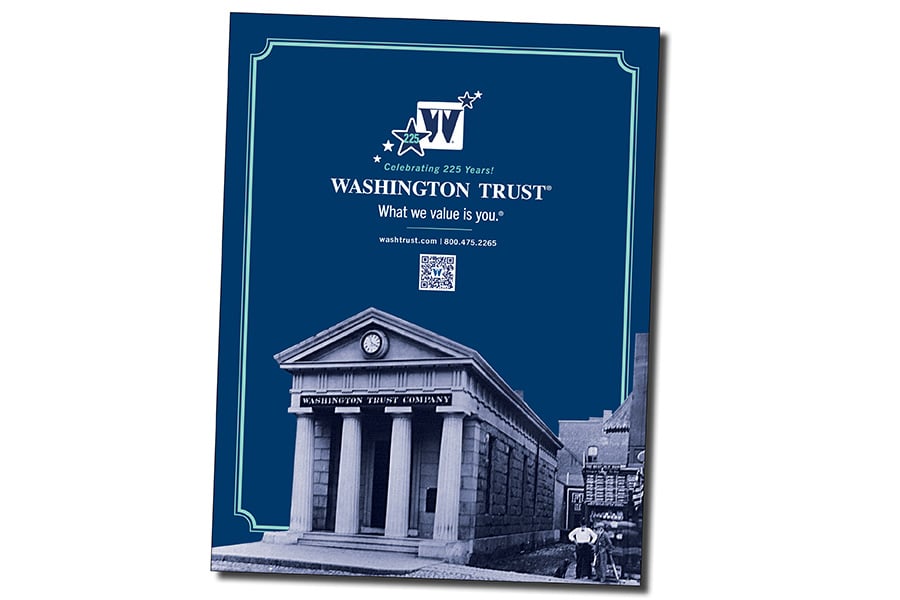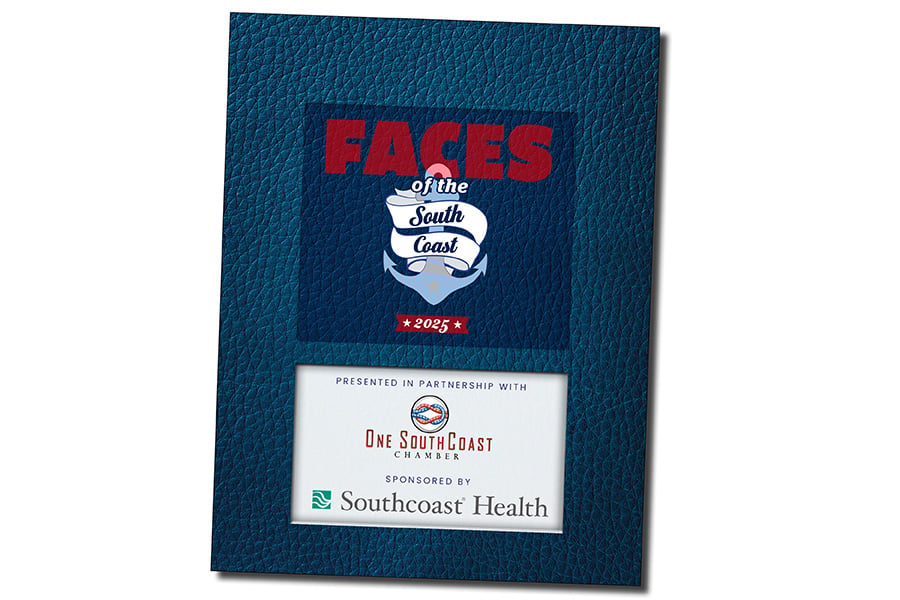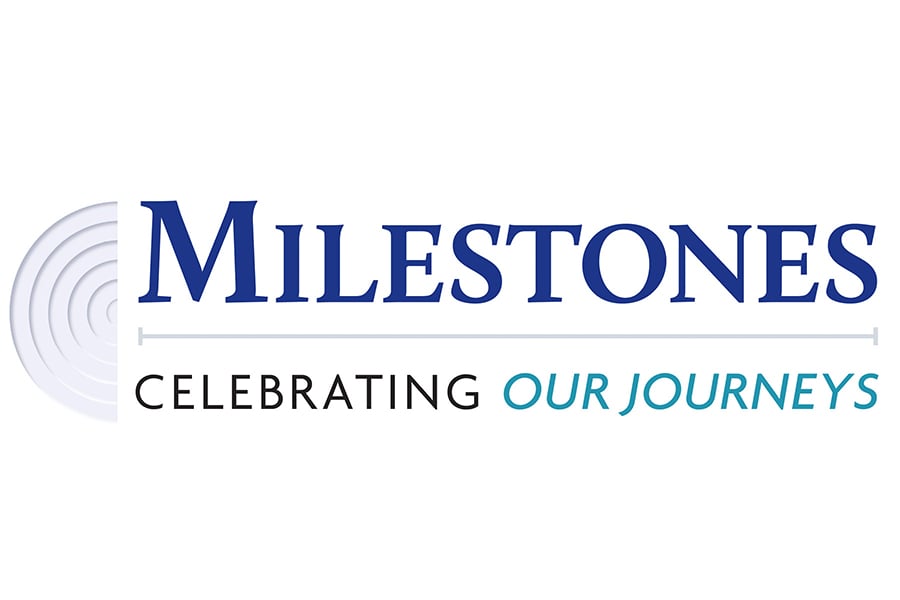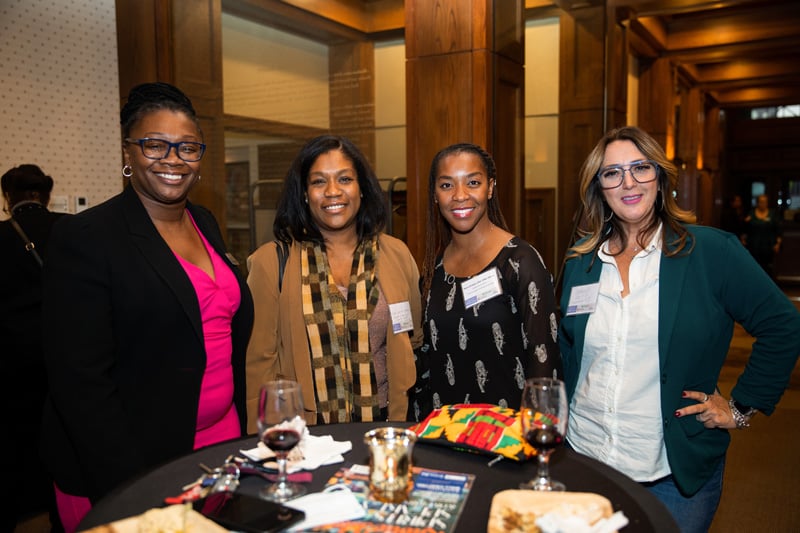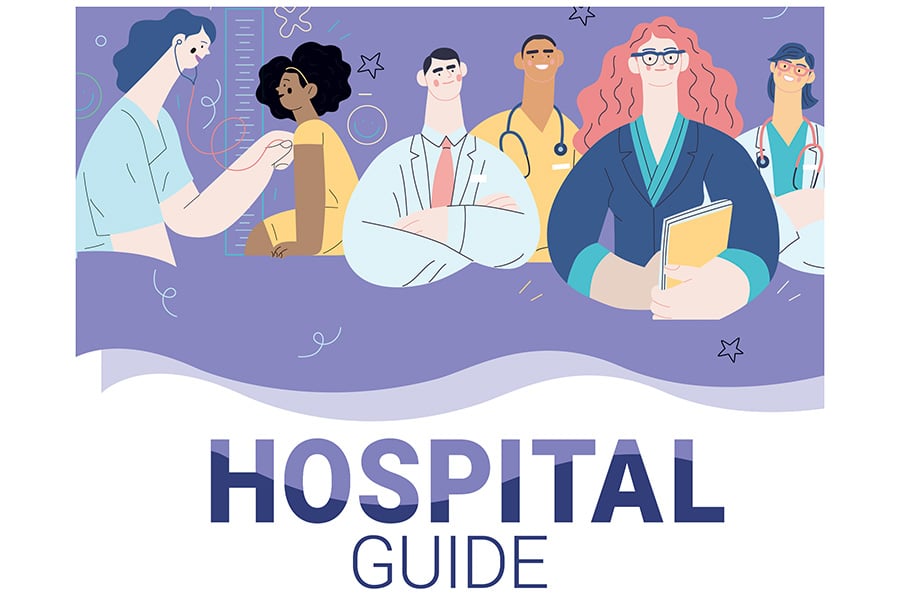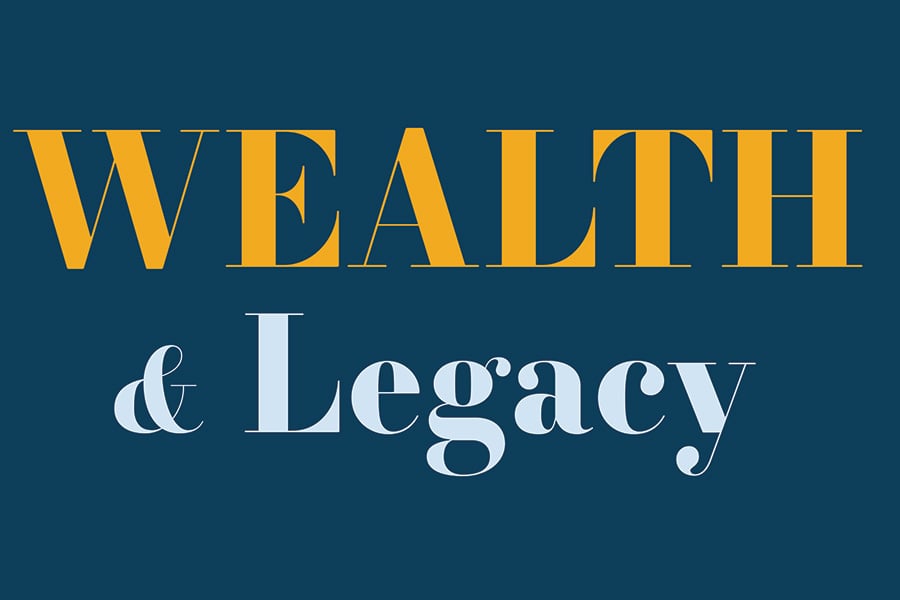What is the Future of Gleaning in Rhode Island?
The age-old practice of harvesting unsold produce and distributing it to those in need helps prevent food waste and alleviate food insecurity. But as federal funding cuts slash staff and budgets, what is the future of gleaning?

Vincent Rivera of Farm Fresh Rhode Island (right) loads crates of corn gleaned at Sodco Farm in North Kingstown into a truck while volunteers Robin Gonsalves, Debra McCartin, Denise Plante and Hope’s Harvest Operations Manager, Breanne Penkala, fill them. Photography by James Jones
Sprouting a foot or two from the ground, green-stemmed scallions stand in rows at Exeter’s Little River Farm.
Flanked by carrots and beets, rhubarb, microgreens and heirloom-variety flint corn that’s just shin-high, scallions stretch to the heavens in the hazy fog of late spring. They’re ready to be harvested and eaten.
Stepping along the rows almost on tiptoe so as not to disturb these precious plants, a dozen or so volunteers pry the slender alliums from the damp soil. Dirt clings in clumps to the short root balls as work-gloved hands delicately shake debris free and remove any broken leaves, then place the stems, whole and fresh, in buckets.
A team of volunteers is given instructions to uproot only two rows of scallions, and rhubarb that is growing nearly to their shoulders. The group is from Farm Fresh Rhode Island’s Hope’s Harvest program and today they’re gleaning 140 pounds of produce. Another group might harvest 1,100 pounds of bok choy tomorrow. Through the growing season, there will be as many as 100 gleaning trips for various fruits and vegetables at different farms across the state.
This practice — harvesting surplus crops from farms — is called gleaning. It has been performed for centuries and is referenced in the Bible, with the Book of Leviticus teaching us to “not reap your field to its very border, neither shall you gather your gleanings after your harvest… you shall leave them for the poor and for the sojourner.”
The gesture of generosity and social duty, which ensured the most vulnerable people had access to nutritious food, continues in contemporary agriculture. Many farmers adopt a philanthropic approach to their work and allow produce to be gleaned and donated to nonprofit organizations and emergency food pantries across the state.
“In my goal as a farmer, which is regenerative agriculture, I want to rebuild the soil, rebuild the community. It’s about sharing nature’s abundance with as many people as I can,” says Little River Farm owner Bob Payne as he greets a fellow farmer
with a warm smile and a handshake. The two are trading potatoes for onions, in a collaboration, he says, that is the foundation of farming. “We are all richer for community, right?”
Indeed, it’s these layers of agrarian friendships and charity that nurture its gleaning operations, says Delite Primus, Farm Fresh RI’s director of advancement. Through Hope’s Harvest, its on-farm food rescue and donation program, the Providence nonprofit has gleaned nearly 1.4 million pounds of produce since 2018. That equals 260,000 pounds per year from fifty-five farms statewide.
Every single pound, down to the last head of lettuce, has been distributed to sixty-five hunger relief agencies that are experiencing soaring demands. In Rhode Island, 38 percent of households don’t have enough food on their tables, and two in five households have difficulty affording adequate nourishment, according to the Rhode Island Community Food Bank.
A Win-Win to Avoid Waste
There are many reasons why gleaning works for farmers and food pantries, and just as many complications in the supply chain and funding sources that unbalance the whole tenuous scale. Farmers may offer produce for gleaning and donation because they have too few staffers or it’s too time-consuming to harvest everything themselves. They may intentionally plant extra to ensure there’s enough, and donate whatever is left over from the market that isn’t worth taking home.
“The farmers really don’t want to see food they grow go to waste for a variety of reasons. But if they can be a part of connecting that food to people who need it, most farmers say, ‘Yes, let me do that,’” Primus says. “We provide the resources to be able to do that. We send volunteers out to pick the produce so farmers don’t have to invest that time. We provide the transportation and relationships with the hunger relief organizations.”
But this structure may create a system contingent on the mercy of farmers and volunteer labor, which could be economically untenable to continue long-term in an industry with paper-thin margins. As federal funding cuts to grants and programming have swept across the industry, grant sources for gleaning have nearly disappeared.
Federal funding “was all cut after the election. They didn’t have anything available,” Payne says. “But, you know, nature is so abundant, there’s going to be something. I’ve covered my seed costs. I’ve covered the cost of planting and fertilizing the beds, and there’s produce left. So I’m glad they come down and get it all out to people that otherwise wouldn’t get this food.”
Payne understands the fragility of this scenario but insists that gleaning is the key to operating a modern agriculture business. As the only full-time employee of his farm — he has one or two temporary seasonal workers and can’t afford to hire more — he can’t sow, harvest and process all the vegetables and greens on his three-acre plot by himself. If he wants to plant a bed that is still full of a crop, he can either mow and compost it or ask Hope’s Harvest to come glean the next week. Understandably, he says, he picks the latter.
“I want to get crops out of the field, so I can get the beds replanted with a new crop for the next season. And certainly, there are times of year where that has to happen with urgency. If I have a bed full of radishes, and [Hope’s Harvest gleans it], I can quickly go back and replant the bed, which is very useful” in crop rotation, Payne explains.
That these scallions from Little River Farm — and the bell peppers, beets, eggplants, watermelons, carrots and greens that are gleaned from May through November — feed those who lack access to or can’t afford fresh fruit and vegetables is a testament to the power of gleaning as one solution to food insecurity.
In May, gleaners brought 1,200 pounds of zucchini, along with Little River Farm’s scallions, to the North Kingstown Food Pantry. In mid-July, it was 200 pounds of kale and raspberries. August yielded corn on the cob, and in late September, it was butternut squash.
“This is incredible, because at wholesale, it’s $4 a bushel of raspberries, and we were able to get it for next to nothing,” says Kristin Jahne, the pantry’s manager. “So that was a humongous win that made our clients extremely happy.”
This gleaned bounty complements additional produce offerings for the nonprofit’s 850 monthly households. Clients can find the produce at the pantry’s monthly shopping event, with fresh fruits and vegetables and pantry staples, and a weekly produce day. Produce gleaned and donated by local farms makes up nearly 30 percent of the pantry’s produce. The pantry has experienced a continued rise in demand and decrease in funding, “so, we’re at this really strenuous crossroads of needing to feed more people, but not having any money to do so,” Jahne says. “Having a partnership with Hope’s Harvest and Farm Fresh RI has been invaluable to bring in produce for our clients at a significantly reduced rate.”
As is often the case, especially in such a small state, these alliances are critical. The Dr. Martin Luther King Jr. Community Center in Newport wouldn’t be able to operate without them, says Director of Hunger Services Ed Crowley. The center collaborated with agencies, farms and farmers markets across the state to distribute 280,000 pounds of fresh produce last year. The center contracts with farmers to grow specific produce
in high demand and glean excess items from vendors at area farmers markets.
The produce is offered at the center’s pantry and at its weekly Produce to the People program, which is like a year-round farmstand set up at outposts across Newport County.
“In terms of gleaning, we want to mitigate waste from the farms and use everything, but there’s also an understanding that the local farmers need to be supported,” Crowley says, adding that the contracts provide backing at multiple stages of the food cycle and compensate farmers fairly for their labor and expenses.
A Growing Need
Farms are also contracted to provide food for a specific population, including culturally relevant crops from immigrant and refugee farmers, explains Nessa Richman, executive director of the Rhode Island Food Policy Council.
“In that case, this also supports the food economy, in addition to being great for food access, nutrition security, and working at the intersection of food climate and environment,” she says. “I think it’s incredible what they’ve been able to do in a relatively short period of time to support food getting to thousands of food-insecure individuals and doing that in partnership with dozens of farms.”
One of MLK’s contract growers, The Local Patch in Portsmouth, plants and harvests hundreds of pounds of carrots a week for the center. Then, as the frost begins to set in later in the year, Hope’s Harvest gleaners arrive to gather the remnants that owner Amy Smith doesn’t want to waste.
Smith also donates leftover produce from the weekly Aquidneck Growers’ Market to the MLK Center. As many as 100 pounds of radishes, lettuce and bok choy that won’t last until the next market day make it to the center. But the donations depend on market attendance: If it’s a busy market and she sells out, she’ll have nothing to donate.
“I don’t commit to any sort of donation, because I have to put my business first. But if food banks are willing to take whatever it is that we have excess of, then I think it works great,” Smith says. “I wholeheartedly support the gleaning process, because I think it really does help me as a farmer, because I have seasonal staff. If people can come to my field and help me take produce out, that’s great.”
Kelli Roberts approaches farming with a similar strategy. She has operated Tiverton’s Roots Family Farm with her husband, Mike, since 2009, contracting with and donating surplus year-round to the MLK Center and the Little Compton Food Bank. When there is surplus to glean, including hardy greens like spinach and kale, she says Hope’s Harvest volunteers respond quickly and do the job well.
“When a crop is ready to harvest or we need the bed space, we’re going to clear it and replant it right away, whether it’s a cover crop or another crop,” she says. “We don’t let the crop just sit if it’s done. So the quick turnaround to come glean and get it done is important, and makes it work for us.”
By the Numbers: Hope’s Harvest
6,582 Volunteers
1,327,929 Pounds of fresh, local produce gleaned since 2018
38,000 People served rescued food monthly at Rhode Island relief agencies
Reaping the Rewards
As optimistic as farmers and nonprofits are about gleaning, the entire agricultural process revolves around efficiency, says Terrence Geary, Aquidneck Community Table’s chief strategy and operations officer.
Farmers know how much to plant, how much to sell, and optimize their sales to maximize profits, Geary says. Gleaning started as a way to solve waste inefficiency in their fields and in markets. But in our modern economy, waste has become a commodity again, he says, adding that technology has reduced waste, assigned value to it and increased the efficiency of farms again.
“For centuries, gleaning was the only politically viable wealth-redistribution mechanism that people would accept, because it solved problems for economies. Wealth redistribution is not popular, but if you reframe it as waste redistribution, then everybody is behind it, which is just incredibly ironic,” Geary posits. “So, is it valuable on a market level? Yes, absolutely, because in reality there’s a huge amount of food-insecure people, and the most direct path to getting food into people’s hands is going to be the most compassionate, the most efficient, and reap the most rewards.”
But even this depends on federal and state funding. Since March, $1 billion has been cut from U.S. Department of Agriculture-funded food programs, including $500 million from the Local Food Purchase Assistance Cooperative Agreement program that supports food banks and domestic farms. Farm Fresh RI lost $3.2 million from its budget over three years, Primus laments. While it earned a $18,000 Local Agriculture and Seafood Act grant to fund contract growing for BIPOC farmers this year, Hope’s Harvest still has only half the staff of a year ago due to discontinued funding.
Smith, of The Local Patch in Portsmouth, also earned a LASA grant to purchase a new barrel washing machine for $3,900. It increases her vegetable-washing output from fifty pounds an hour to 200 pounds in twenty minutes, she says. Without it, she says she would likely be unable to fulfill her carrot-growing contract for MLK Center.
“It’s not just less funding for farmers. It’s less food for hunger-relief organizations and Rhode Islanders,” Primus says. “This all impacts them and how much food they have.”

Andrea Epstein, Laurie Petrone and Rod Stitt collect ears of corn at Sodco Farm. Photography by James Jones
Planting It Forward
While the economics of gleaning continue to be unstable, the Rhode Island Food Policy Council is starting at the top. As part of its ongoing advocacy efforts, it has prioritized legislation that would create a surplus food donation tax credit. The bill was introduced to the House of Representatives in February, and the House Finance Committee has held it for further review.
If approved, starting Jan. 1, 2026, qualified taxpayers in Rhode Island, including farmers, “would receive a tax credit equal to 75 percent of the fair market value of the donated apparently wholesome food, capped at $5,000 per year.” It would also provide a 50 percent credit on transportation costs related to the donation, capped at $5,000 annually. To qualify for the credits, the donated food must be used by the nonprofit organization to provide food for the needy.
“We’re very hopeful that the state legislature and the governor will see that a small tax credit for qualified taxpayers can really pay huge dividends, not just for environmental sustainability and to support these local farms and small businesses, but also to address the increasing food insecurity that we are facing in the state,” says Richman, of the Rhode Island Food Policy Council.
“I think gleaning is more important now than ever, because the state is facing some severe impacts from decisions at the federal level that will reduce the benefits that Rhode Islanders receive from the Supplemental Nutrition Assistance Program,” she says. “There’s going to be more need, and gleaning is part of the solution, with an increased supply of emergency food.”
In the meantime, Hope’s Harvest continues to host as many as five gleaning trips weekly through the growing season. While it’s diversifying its budget to become less reliant on federal funding sources, it’s also forced to reduce its contract growing opportunities with local farms, Primus says, which does not bode well for farmers. But Payne, Roberts and Smith, and the state’s many other farmers, will continue growing wholesome food to feed their community as they’ve always done.
Back on Payne’s farm among the newly reaped bed of scallions, volunteer Andrea Epstein explains that she found gleaning while earning her master gardener certification in 2022. Every year, she sees that food is less accessible, more expensive, and families can’t afford enough, even while using their SNAP benefits. The desire to have local produce and local food is clear, she says, and the more ways we make that accessible, the better.
“I really think everyone in this cycle of gleaning gets something out of it, which is pretty amazing to think about. The farmers hopefully get satisfaction that the food they work so hard to grow is not being wasted, and the people who are gleaning get a lot out of it — a sense of community, a sense of hopefully helping to balance out food equity,” she says. “I know it’s small, but it’s something. And being in nature and certainly meeting new people and seeing farms is a benefit. Hopefully, the people who are the recipients benefit here too, which is the critical piece.”







